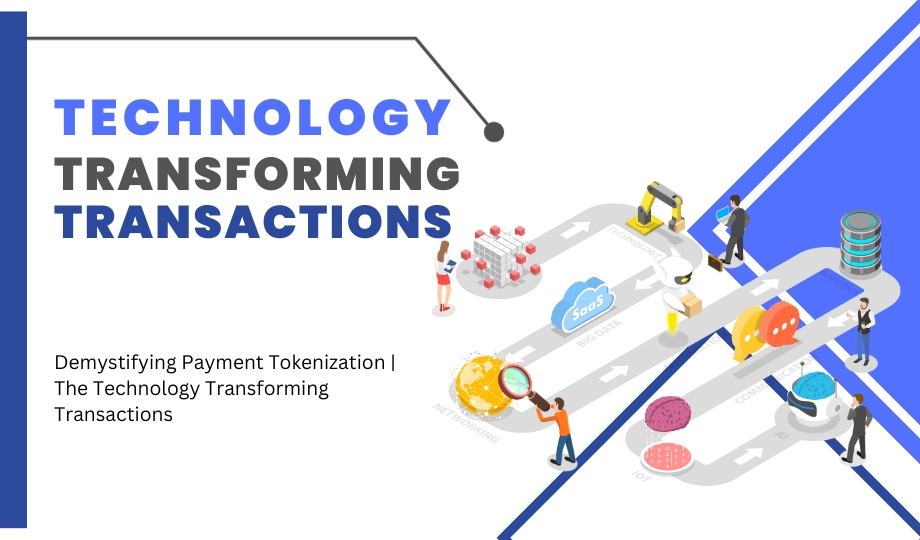In today’s digital payment landscape, “Tokenization” has taken center stage, driven by the surge in digital wallet usage, exemplified by platforms like Apple Pay, PayPal, and Gpay. This article delves into the intricacies of payment tokenization, exploring its implementation, underlying technology, and the advantages and drawbacks of integrating it into your payment infrastructure.
Understanding Payment Tokenization
Tokens, in the context of payment systems, are secure, encrypted pieces of data. They serve as custodians of payment information, safeguarding it in lieu of storing it directly with the merchant, payment gateway, or processor. Payment tokenization presents myriad benefits for both merchants and customers, chief among them being heightened security and reduced PCI compliance costs. Leading card scheme networks and digital wallets make extensive use of payment tokenization technology.
How Tokenization Operates
Tokenization serves as a protective placeholder for sensitive payment data. When a transaction occurs, the actual card data is substituted with a token, ensuring the security of the payment process. Importantly, the Primary Account Number (PAN) is not transmitted during the transaction, bolstering security. In the event of a data breach at one merchant, the compromised data is isolated from a customer’s other credit card information, making it considerably more challenging for fraudsters to exploit.
Tokenized payments are applicable in both online and offline scenarios. To illustrate the tokenization process, consider the following step-by-step sequence:
A credit card is used in a Point of Sale (POS) machine or for an online transaction.
The credit card number is transmitted to the tokenization vault.
The tokenization vault generates a 16-character random string, which replaces the original credit card number.
The tokenization vault returns the newly generated string to the POS system or eCommerce site, replacing the customer’s payment data. Importantly, this string differs for each merchant the customer engages with.
Appearance of Tokens
Tokens in the digital realm are digital representations of value and do not resemble actual currency. They operate on various blockchain platforms and networks, bearing no resemblance to physical money. Tokens can be categorized into two types:
Format Preserving Tokens: These tokens mimic the appearance and length of a standard 16-digit credit card number.
Non-Format Preserving Tokens: In contrast, non-format preserving tokens do not resemble credit card numbers, exhibit variable lengths, and may incorporate alphanumeric characters.
Pros and Cons of Payment Tokenization
Pros:
Reduced Data Breaches: In an era marked by escalating data breaches and cyberattacks, financial institutions are actively seeking secure alternatives for storing and transmitting sensitive customer data. Payment tokenization emerges as a robust solution, shielding customer data from potential interceptors during transmission.
Streamlined Compliance: Payment tokenization simplifies Payment Card Industry Data Security Standard (PCI-DSS) compliance by eliminating the need to store credit card information in your environment. This storage and transfer approach effectively nullifies the threat of third-party cyberattacks.
Enhanced Trust with Customers: Payment tokenization establishes an additional layer of trust between merchants and customers. Merchants are assured that sensitive data remains secure, while customers gain confidence in the safeguarding of their payment data against potential threats.
Versatile Security Measure: Tokenization isn’t limited to payment data alone; it can be applied to safeguard a wide array of sensitive information, including financial statements, medical records, criminal records, driver’s licenses, loan applications, stock trades, voter registrations, and more.
Reduced Data Handling Responsibility and Costs: Tokenization eases the burden of storing and encrypting cardholder data. Consequently, PCI-DSS compliance becomes more straightforward and cost-effective, as tokenization shifts most PCI compliance obligations from the merchant to the token provider.
Cons:
Increased Payment Infrastructure Complexity: Introducing an additional layer of security, such as tokenization, can lead to a more intricate payment infrastructure. Handling the customer’s information necessitates processes of detokenization and retokenization to maintain security during authorization.
Limited Support by Payment Processors: Given that payment tokenization technology is relatively new, a restricted number of payment processors offer robust tokenization support. This may necessitate integration with payment processing tools that are not the merchant’s preferred choice.
Unresolved Security Risks: While tokenization mitigates numerous security risks, it does not eliminate all vulnerabilities, particularly when relying on third-party token vaults. Merchants are dependent on their partner vendors to have robust security measures in place to protect customer data.
Maximizing Tokenized Payments for Merchants
Enhanced Checkout Conversions: Tokenization streamlines the checkout experience for returning customers, offering a frictionless process that reduces the number of steps required to make a payment. This convenience delights customers and enhances conversion rates.
Empowering an Omnichannel Strategy: A robust omnichannel strategy provides customers with the flexibility to explore and transact on their preferred channel. With omnichannel payment tokenization, customers can effortlessly make purchases across various channels, even after visiting a physical store. They no longer need to re-enter credit card information on the merchant’s website, as the data was already captured at the retail store’s point of sale.
How Web Technology Expert Simplifies Payment Tokenization
The Web Technology Expert payment platform is a versatile solution, offering seamless integration with multiple payment gateways and an array of local payment methods. Merchants gain immediate access to over 300 international payment methods, empowering them to tokenize payment data, regardless of the methods customers choose.
Beyond top-tier security, our platform enhances the customer experience during checkout by providing a localized checkout environment, including preferred payment methods, language options, and currency choices. Tokenized payment data simplifies the checkout process, enabling one-click payments, making the payment process efficient and secure.

